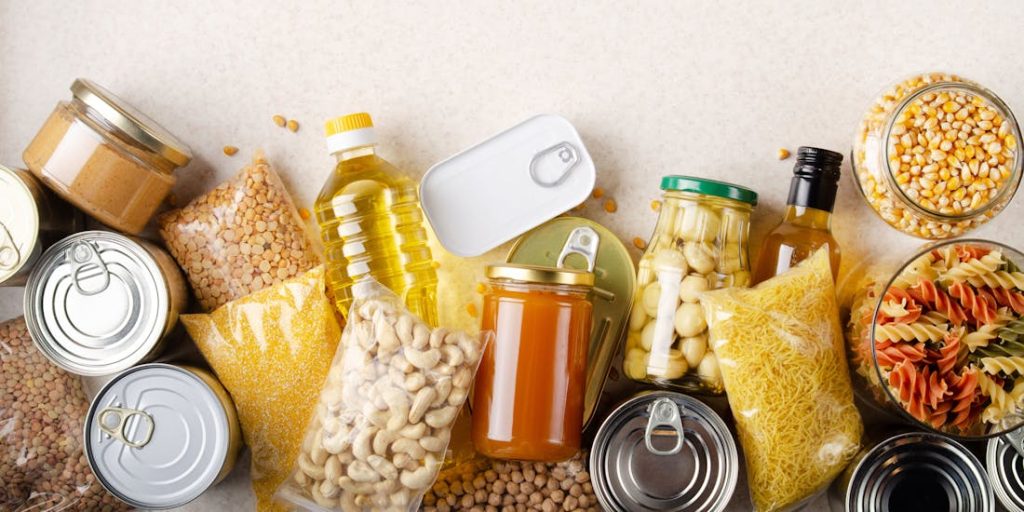
Traveling is one of life’s greatest pleasures, filled with opportunities to explore new cultures, meet diverse people, and indulge in local cuisines. However, amid the excitement, food safety for travelers often gets overlooked. The recent recall of frozen waffles due to potential Listeria contamination serves as a sobering reminder that even seemingly innocuous foods can pose health risks. In this comprehensive guide, we will delve into the implications of this recall, understand Listeria, and discuss crucial food safety tips for travelers to ensure safe and enjoyable adventures.
Understanding Listeria
What is Listeria?
Listeria monocytogenes is a type of bacteria that can lead to a serious infection known as listeriosis. This bacterium is particularly concerning because it can grow in refrigerated environments, making it a unique threat to food safety for travelers. Unlike many pathogens that thrive in warm conditions, Listeria can multiply even at low temperatures, which is why it can sometimes go undetected in frozen and refrigerated foods.
Who is at Risk?
While Listeria can affect anyone, certain groups are at higher risk for severe illness:
- Pregnant Women: Pregnant individuals are ten times more likely to contract listeriosis. The infection can lead to miscarriage, stillbirth, premature delivery, or life-threatening infections in newborns.
- Newborns: Babies, especially those born prematurely, are particularly vulnerable to listeriosis.
- Elderly Individuals: Older adults often have weakened immune systems, making them more susceptible to foodborne illnesses.
- Immunocompromised Individuals: Those with compromised immune systems, due to conditions like HIV/AIDS, cancer, or diabetes, are at increased risk.
Symptoms of Listeriosis
Symptoms of listeriosis can vary widely but often include:
- Fever
- Muscle aches
- Nausea and diarrhea
- Headache
- Stiff neck
- Confusion
- Loss of balance
Symptoms can appear anywhere from a few days to several weeks after exposure, making it difficult to trace the source of an infection. Understanding these symptoms is crucial for food safety for travelers, especially when trying unfamiliar foods.
The Recall: What Happened?
Recently, a batch of frozen toaster waffles, Belgian waffles, and pancake products was recalled due to potential Listeria contamination. This recall was triggered by routine testing that indicated the presence of Listeria monocytogenes in some products. Although there were no reported illnesses linked to this recall at the time, the swift action taken by manufacturers and regulatory bodies was crucial in preventing potential outbreaks.

The Recall Process
Recalls typically occur in several stages:
- Detection: The presence of harmful bacteria is often discovered through routine inspections or testing.
- Notification: Once a potential contamination is confirmed, the manufacturer notifies regulatory agencies, such as the FDA and CDC, which then alert the public.
- Consumer Action: Consumers are advised to check their homes for the recalled products and return or dispose of them.
- Investigation: Ongoing investigations are conducted to determine the source of contamination, and preventive measures are put in place to avoid future incidents.
Understanding this process is vital for travelers to navigate food safety effectively and respond promptly to any potential risks.
Food Safety: A Traveler’s Concern
The Importance of Food Safety While Traveling
When traveling, food is often a highlight of the experience. From street food in Bangkok to pastries in Paris, trying local delicacies can be one of the most memorable aspects of a trip. However, with the allure of new tastes comes the responsibility of ensuring food safety for travelers. Here are several key reasons why food safety should be a top priority:

- Preventing Illness: Foodborne illnesses can ruin a trip. Symptoms like vomiting, diarrhea, and fever can lead to missed tours, hotel stays, and overall discomfort.
- Awareness of Recalls: Recalls can happen at any time, affecting foods commonly consumed while traveling. Staying informed helps travelers avoid potential risks.
- Understanding Local Practices: Different countries have varied food safety standards. Knowing what to look out for can help travelers navigate unfamiliar culinary landscapes safely.
The Role of Frozen Waffles and Other Convenient Foods
Frozen waffles and breakfast items are popular among travelers, especially those who prefer quick meals or who may be staying in accommodations with limited cooking facilities. They are often seen as a hassle-free option for breakfast or snacks during road trips, flights, or hotel stays. However, as evidenced by the recent recall, these foods can carry risks.
Why Frozen Foods?
- Convenience: Frozen foods are easy to prepare, requiring minimal cooking time. They are perfect for busy mornings or quick meals on the go.
- Long Shelf Life: Frozen products can be stored for extended periods, making them a practical choice for travelers who may not have access to fresh groceries.
- Variety: The variety of frozen foods available allows travelers to enjoy a range of meals without the need to shop extensively.
While these advantages make frozen waffles appealing, it’s crucial to approach them with caution, especially in light of food safety for travelers.
Staying Informed: Monitoring Food Recalls
Being informed about food recalls is essential for travelers. Here are some strategies to help you stay updated:
1. Check Official Sources
Regularly visit websites such as the FDA, CDC, and your country’s health department to stay informed about food recalls. Many of these sites offer email alerts or newsletters to keep you updated on the latest food safety news.
2. Follow Social Media Channels
Many health organizations and food safety agencies maintain active social media profiles. Following them can provide real-time updates on recalls and safety alerts.
3. Use Mobile Apps
Several mobile apps focus on food safety. These apps often include features like barcode scanning to help you quickly check if products are recalled.
4. Listen to News Reports
Local and national news outlets often report on significant food recalls. Staying tuned to the news can help you catch vital information regarding food safety for travelers.
Inspecting Packaging: A Quick Checklist
Before purchasing frozen products, take a moment to inspect the packaging. Here’s a quick checklist to follow:

- Check for Recalls: Look for any recall information directly on the packaging. Many companies include details about recalls on their websites and product labels.
- Inspect for Damage: Ensure the packaging is intact. Avoid products with torn, crushed, or damaged packaging, as this can compromise food safety.
- Verify Dates: Check the expiration or best-by date. Consuming expired products can increase the risk of foodborne illnesses.
- Review Ingredients: If you have allergies or dietary restrictions, review the ingredient list carefully. Be cautious of any unfamiliar ingredients that could pose a risk.
Choosing Fresh Options While Traveling
Whenever possible, opt for fresh, locally sourced meals. Here’s why this is beneficial:
- Quality Control: Fresh foods are often subject to stricter quality controls, reducing the risk of contamination compared to processed and frozen foods.
- Nutritional Value: Fresh foods typically retain more nutrients compared to their frozen counterparts, making them a healthier option.
- Local Experience: Eating fresh, local cuisine enhances the travel experience and allows you to connect with the culture of the destination.
- Reduced Risk of Recalls: By choosing fresh foods, you eliminate the potential risks associated with recalls of frozen and processed products.
Tips for Finding Fresh Options
- Visit Farmers’ Markets: These markets often feature fresh, locally grown produce and other products, allowing you to sample the local flavor.
- Dine at Local Restaurants: Look for eateries that prioritize fresh ingredients. Local chefs often have better insight into sourcing quality food.
- Ask Locals for Recommendations: Engaging with locals can lead you to hidden gems that serve fresh, delicious meals.
Understanding Food Storage Guidelines
If you decide to travel with frozen products, proper storage is crucial. Here are some essential guidelines:

- Use a Quality Cooler: Invest in a high-quality cooler with good insulation to keep your frozen products at a safe temperature.
- Pack Ice Packs: Use ice packs or dry ice to maintain a low temperature in your cooler. This will help keep your food frozen for longer periods.
- Limit Exposure to Heat: Keep your cooler out of direct sunlight and avoid opening it frequently to maintain the temperature.
- Know When to Discard: If you suspect that your frozen products have thawed or been stored improperly, it’s better to err on the side of caution and discard them.
Know Your Symptoms: Recognizing Foodborne Illness
Understanding the symptoms of foodborne illnesses can help you take action quickly. If you experience any of the following after consuming food, seek medical attention:
- Flu-like Symptoms: Persistent fever, chills, or body aches can indicate an infection.
- Gastrointestinal Issues: Nausea, vomiting, diarrhea, or abdominal cramps can signify food poisoning.
- Neurological Symptoms: Confusion, stiff neck, or loss of balance may indicate more severe infections like listeriosis.
- Seek Medical Attention: If you experience severe symptoms or belong to a high-risk group, don’t hesitate to seek medical care. Early intervention is key in treating foodborne illnesses.
The Impact of Travel on Food Safety Practices
Traveling not only exposes individuals to new culinary experiences but also to varied food safety practices. Understanding these differences is essential for maintaining your health while traveling.
1. Cultural Differences in Food Handling
Different cultures have unique approaches to food preparation and storage. In some countries, street food is a staple and can be delicious, but it might not always adhere to the same hygiene standards you’re used to at home. Be mindful of how food is prepared and served, especially in places where refrigeration may not be consistently practiced.
2. Language Barriers
When traveling in a foreign country, language barriers can complicate your understanding of food safety practices. It’s essential to learn key phrases related to food allergies or dietary restrictions and to inquire about food preparation methods. Apps like Google Translate can be invaluable in these situations.
3. Local Regulations and Standards
Food safety regulations vary from country to country. While some places may have strict health codes, others might not enforce them as rigorously. Familiarizing yourself with local food safety standards can help you make informed choices about where to eat.
Special Considerations for Specific Destinations
1. Street Food in Developing Countries
Street food can be a delicious way to experience local culture, but it’s important to exercise caution. Look for vendors with high turnover rates, as fresh food is less likely to be contaminated. Choose foods that are cooked to order rather than those that have been sitting out.
2. Traveling with Kids
If you’re traveling with children, extra precautions are necessary. Kids are more susceptible to foodborne illnesses, so ensure that they eat well-cooked foods and avoid raw or undercooked items.
3. Traveling During a Pandemic
The COVID-19 pandemic has added another layer of complexity to food safety. Restaurants may be operating differently, and it’s crucial to follow local guidelines regarding dining out, takeout, and food safety.
Preparing for Your Trip: A Checklist
Before embarking on your journey, consider this checklist to ensure you’re prepared for food safety while traveling:
- Research Your Destination: Understand the local cuisine and food safety practices in your destination. Research restaurants and street food options ahead of time.
- Pack Necessary Items: Consider bringing a small food safety kit, including hand sanitizer, disinfecting wipes, and any medications you might need in case of foodborne illness.
- Stay Hydrated: Drink plenty of water, but be cautious about the source. In many countries, it’s safer to drink bottled water rather than tap water.
- Know Emergency Contacts: Familiarize yourself with local health services and know how to reach them in case of a food-related emergency.
Conclusion: Travel Safely and Enjoyably
The recall of frozen toaster waffles and related products due to Listeria contamination serves as a vital reminder of the importance of food safety for travelers. By being aware of potential risks, understanding food safety practices, and staying informed, you can avoid the pitfalls of foodborne illnesses.
As you embark on your next adventure, keep these tips in mind to ensure a safe and enjoyable experience. Food should enhance your travels, not detract from them. By prioritizing food safety for travelers, you can savor local cuisines, explore new flavors, and create lasting memories without the worry of illness.
Key Takeaway
Travel is meant to be an enriching experience filled with exploration and joy. By remaining vigilant about food safety—especially regarding products like frozen waffles that can be prone to recalls—you can ensure that your adventures are both delicious and safe. So pack your bags, plan your itinerary, and get ready for an unforgettable journey, knowing that you’re equipped to make informed choices about what you eat along the way! Safe travels!
